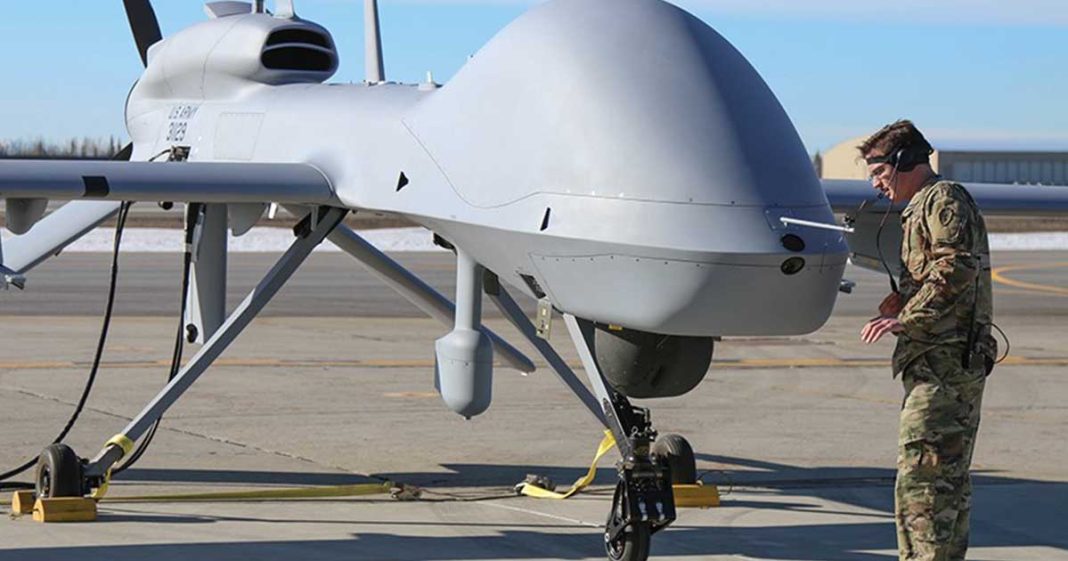
by Amber Afreen Abid 4 September 2023
The evolution of technology has always played a pivotal role in shaping the nature of warfare. From the invention of the trebuchet in medieval times to the development of tanks and fighter jets in the 20th century, each leap in technology has brought about significant changes in how conflicts are waged. In the modern era, one of the most groundbreaking developments in military technology is the rise of drones, which have introduced a new aspect in warfare that is reshaping strategies, ethics, and the very nature of engagement on the battlefield.
The integration of drones into military arsenals has revolutionized traditional warfare strategies. Drones offer unprecedented advantages in terms of flexibility, agility, and persistence. They can loiter over a target area for extended periods, providing real-time intelligence to commanders. This data allows for more informed decision-making, as commanders can assess situations without putting soldiers’ lives at risk.
Having appeared in various conflicts in recent years, notably in Nagorno-Karabakh (2020) or Syria (since 2011), drones have taken on a new dimension since the start of the war in Ukraine, which was triggered by Russia on February 24, 2022. They have gradually established themselves as an essential weapon for both sides. Ukraine and Russia are using drones in a wide assortment of missions in Ukraine, Russia and the Black Sea. While both combatants entered the war with drones, there has been a Cambrian explosion in missions and types of drones over the past 18 months. Since the start of the Russian invasion, both armies have been using several hundred unmanned aerial vehicles every day. According to a report published on May 19 by the Royal United Services Institute (RUSI), a British think tank specializing in defense issues, the Ukrainian military is now losing some 10,000 drones a month on the battlefield, or more than 300 a day. Recently, on August 30, 2023, the Russian state news agency has reported that Ukrainian drones hit an airport near Russia’s border with Estonia and Latvia, causing a huge blaze and damaging four Il-76 military transport planes.
South Asia is a region which has always been attracted to the new and advanced technologies. In recent years, India has continuously exhibited the tendencies to exploit the levels below the nuclear threshold in form of its so-called doctrine of ―surgical strike. But, in all these attempts India was not able to attain any success and in its most recent even has to bear loss of fighter air crafts, helicopters, and one of the pilots was captured by Pakistan. Thus, in this back-drop drones provide a lucrative opportunity to India to use a drone. As drones blur, the lines between peace and war, high risk or low risk and political or ethical, India might consider using these smaller UAV systems because of its warmongering policy doctrines and RSS-driven leadership. But the use of drones in South Asia could lead to unintended escalation.
Thus, it has become essential for Pakistan as well to develop anti-drone technology, and the rapid response system to counter this new form of threat. Moreover, it is crucial for governments, international organizations, and scholars to engage in discussions that address these issues and establish norms and regulations for the use of drones in conflict.
